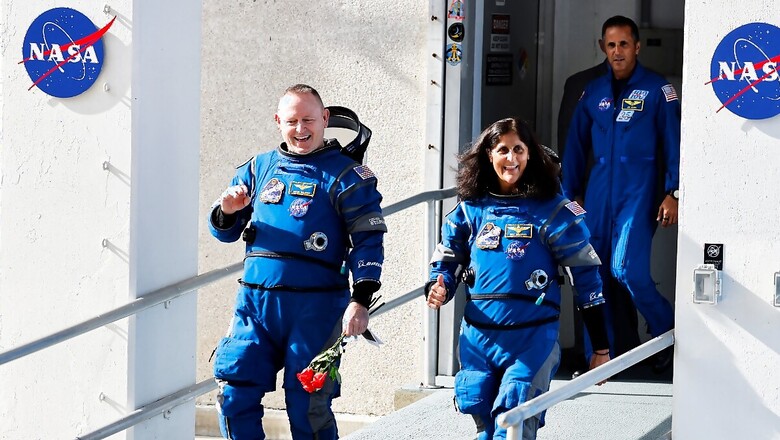
views
The US space agency has once again postponed the return of Boeing’s Starliner from the International Space Station (ISS) until at least early July. The delay aims to resolve technical issues with the spacecraft, including five thrusters that stopped working during flight and a series of helium leaks, CNN reported.
The ship, officially known as the CST-100 Starliner, has US astronauts, Butch Wilmore and Indian-origin Sunita Williams, who were lifted off on June 5. Boeing’s first crewed mission had initially aimed for June 26, after being pushed back from the original target of June 14. On Friday, NASA announced a further delay in Starliner’s return but did not set a new date, raising questions about when the two astronauts will return.
Leaders from @NASA and @BoeingSpace are adjusting the June 26 return to Earth of the Crew Flight Test mission with @NASA_Astronauts Butch Wilmore and Suni Williams from @Space_Station.This adjustment deconflicts from a series of spacewalks while allowing mission teams time to… pic.twitter.com/pjqz1zEu4g
— NASA Commercial Crew (@Commercial_Crew) June 22, 2024
‘Taking our time’
“Mission managers are evaluating future return opportunities following the station’s two planned spacewalks on June 24 and July 2,” NASA said in a statement. “We are taking our time and following our standard mission management team process,” said Steve Stich, NASA’s commercial crew program manager. “Starliner is performing well in orbit while docked to the space station,” Stich said, adding that the additional time would yield “valuable insight” into system upgrades for future missions.
The crewed test of the spacecraft, test-flown to space two times since 2019 without humans on board, has encountered five failures of its 28 maneuvering thrusters, five leaks of helium gas meant to pressurise those thrusters, and a slow-moving propellant valve that signalled unfixed past issues. The issues and the additional tests run by NASA and Boeing call into question when exactly Starliner’s crew will be able to make the roughly six-hour return journey home, and add to the program’s broader problems.

Cost overruns
Boeing has spent $1.5 billion in cost overruns beyond its $4.5-billion NASA development contract. NASA wants Starliner to become the second US spacecraft capable of ferrying astronauts with the ISS, alongside SpaceX’s Crew Dragon, its primary ride since 2020. However, the Starliner program has battled software glitches, design problems and subcontractor disputes for years.
When Starliner arrived in the space station’s vicinity to dock on June 6, the five thruster failures prevented a close approach by the spacecraft until Boeing made a fix. It rewrote software and tweaked some procedures to revive four of them and proceed with a docking. Starliner’s undocking and return to Earth represent the spacecraft’s most complicated phases of its test mission. NASA officials have said they want to better understand the cause of the thruster failures, valve issue and helium leaks before Starliner begins its return.
While just one thruster remains dead in Starliner’s current flight, Boeing encountered four thruster problems during the capsule’s uncrewed return from space in 2022. The situation may not seem as perilous as some believe, according to Space expert Jonathan McDowell. “You can lose a few thrusters and still be OK because there are many of them but still this is the propulsion system and you want to understand everything that’s going on,” McDowell told The New York Post. “They want to be sure these smaller issues aren’t masking bigger ones.”
(With agency inputs)

















Comments
0 comment